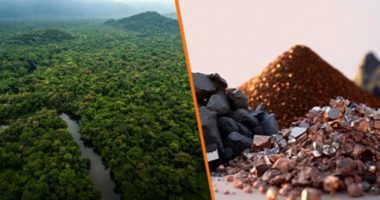- Lithium Universe (LU7) outlines the significant lithium and REE potential at its projects in the tier-one mining regions of Canada and Australia
- LU7’s Canadian projects include Apollo and Adina South and West, which lie near Patriot Battery Metal’s (PMT) Corvette project and Winsome Resources’ (WR1) Adina project
- Meanwhile, in Australia, the company’s focus shifts to its Lefroy project and its 80 per cent owned Voyager project
- At Apollo, LU7 will kick off an accelerated exploration program, utilizing systematic mapping, geochemical soil sampling, and geophysical surveys of the 17 known pegmatite outcrops at the project
- LU7 shares are up 7.02 per cent, trading at 6.1 cents at 11:41 am AEST
Lithium Universe (LU7) has outlined significant lithium and rare earth element potential at its projects in the tier-one mining regions of Canada and Australia.
The company’s Canadian projects include Apollo, Adina South, and West, as well as Margot Lake.
Apollo is situated 29 kilometres southeast of Patriot Battery Metals’ (PMT) Corvette project, which encompasses a 109.2 million tonne (Mt) lithium resource at 1.42 per cent lithium oxide.
Additionally, Apollo neighbours Winsome Resources’ (WR1) Adina project, located 28 kilometres west, has announced significant grades at 1.34 per cent lithium oxide.
LU7 aims to discover similar intercepts at Apollo, where it holds 466 claims and has identified 17 pegmatite outcrops, covering 240 square kilometres in the northwest of Quebec.
Adina South and Adina West comprise 89 claims over 45 square kilometres, and Margot Lake encompasses 32 claims covering 9.8 square kilometres.
Margot Lake is a well-known competitive district for lithium discoveries and has been labelled ‘Electric Avenue’ for its potential to penetrate the electric vehicle market.
Meanwhile, in Australia, the company’s focus shifts to its Lefroy lithium project and its 80 per cent owned Voyager rare earth project.
Voyager contains two exploration licenses that collectively cover 385 square kilometres in northern and eastern Tasmania, encompassing the only ionic clay rare earth discovery in the state.
Lefroy, on the other hand, is located in the renowned WA Goldfields, home to some of the largest mines in the last 100 years, and it covers 42 square kilometres.
Given the success of the companies surrounding LU7, the potential for further exploration in the area is substantial, and the company has prepared a set of initial exploration activities to kickstart the process.
An accelerated exploration program will commence, utilising systematic mapping, geochemical soil sampling, and geophysical surveys of the 17 known pegmatite outcrops at Apollo.
The recent identification of NE-SW trending topographic highs by the Québec government will also be on the company’s radar, paired with an airborne geophysical and remote survey.
These initial surveys will aid in identifying specific areas suitable for high-priority drill targets to eventually launch a maiden drilling campaign.
LU7 shares were up 7.02 per cent, trading at 6.1 cents at 11:41 am AEST.








